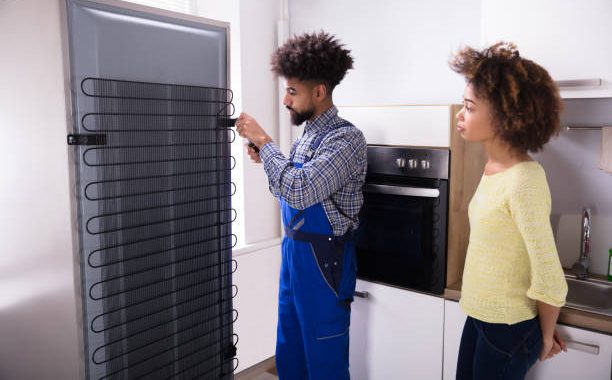To recognize in time, why the refrigerator does not switch off, is to keep from breakage the motor, which is not calculated at all for constant work without rest. And to other units of refrigerators, such overloads are not useful at all.
Therefore, if you faced such a problem, as continuous refrigerator work, begin to search for the reason at once.
Check the thermostat
The first and easiest thing to do is adjust the thermostat settings. You or your housemates may have accidentally snagged the thermostat knob and set it to the lowest temperature.
Check the seal
It may be even easier to check the integrity of the rubber seal than the functionality of the thermostat. But since this cause of refrigerator malfunctions is a little less common, we’ll risk putting it in second place. Make sure that the rubber is adhering tightly to the door and the case around the entire perimeter, including at the very bottom. If it is not – urgently get a new sealant. Otherwise, the warm air penetrating through even the imperceptible gaps and delaminations of the gasket will also damage the refrigerator’s cooling performance inside the chamber. The sealant can be replaced with your own hands and you can forget about the fact that your refrigerator does not turn off. It will now shut off as it is lined, 4-8 times per hour.
Move away from the stove and battery
So, why didn’t you put this reason first? After all, what is easier – to look, whether the refrigerator near a radiator of heating and if exactly there it is, to look for a new place for it. In the ranking of reasons, this reason is not in the top three. Extremes who wanted to put the refrigerator right next to the stove or radiator are very few. If you belong to this guard – please, expose yourself to extreme conditions, not the appliances! The mechanism of exposure to the refrigerator is about the same as in the previous paragraph with the entry of room air due to a breach of the seal. But as the stove and the radiator heat very noticeably, there is no need to break the air tightness – the heat will reach the depths of the fridge compartment even through the plastic walls. And even if the refrigerator does not turn off, but freezes, it is still not worth postponing the rearrangement.
Check the capillary tubes
Capillary tubes, through which the refrigerant circulates, can be clogged or corroded. In the first case, the refrigerant cannot circulate properly and therefore provide faster cooling. The compressor is forced to “run” it longer. In the second case, the refrigerant leaks, and the remaining freon is no longer enough to fully cool the air in the chamber. Therefore, the refrigerator works and does not shut down. You may need new tubes to replace them.
Check the motor-compressor
Of course, more often when the motor breaks, the refrigerator does not turn on at all, then it starts working without rest. But it can also be the case that the refrigerator compressor won’t turn off because it got “jammed” somewhere and now it can’t stop. Check the motor and buy a new one if necessary.
Check the control board
If all the previous searches have failed, it may be the control board. Rarely, but not infrequently, a faulty board makes itself known this way. Examine the board – you may see blackened or melted areas. In general, you don’t even have to worry about what happened to the board. If the board shows any signs of damage, it should be replaced.
Hopefully, you have figured out how to understand why your refrigerator does not turn off. Good luck with troubleshooting and solving the problem.
In any case, you can always call Chula Vista Appliance Repair Company for a handyman. Our technicians can handle any breakdown.
Contact us
(619) 880-5508


